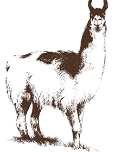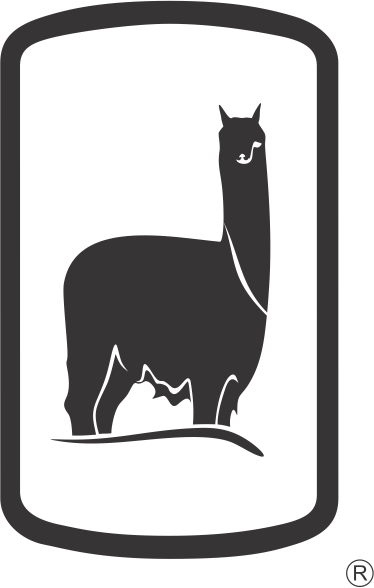
Other South American Camelids
Llama - Guanaco - Vicuña
The South American camelids live mainly in the Peruvian Andes and their breeding constitutes an economic activity of great importance for a large sector of the population in the Peruvian highlands who dedicate their time and resources to the breeding and management of Vicuñas, Alpacas and Llamas, while other sectors of the same population benefit from this activity indirectly.

Llama
The Llama (Lama glama) is the biggest and heaviest of the South American camelids. Its long legs and prominent, curved ears are the features which distinguishes it from the other camelids. The Llama has been domesticated and used as beasts of burden for transport since pre-Incan times and even today the llama forms part of many of the diverse customs and religious rituals of the Andean peoples. There are two species of llama: the ‘Qara’ or “without hair” and the ‘Chaku’ or ”woolly”. The hair of the Llama is coarser and rougher than that of the Alpaca, but if removed, can be just as soft. Almost 65% of all llamas live in the Bolivian highlands.
Scientific Name: Llama (Lama glama)
Population: 1.0 million (Llama chaku)
1.5 million (Llama Qara)
Habitat: Bolivia, Peru, Chile y Argentina

Guanaco
Just like the Vicuña, the Guanaco is a wild camelid that lives in small groups of females, usually dominated by a single male. The fibre of the Guanaco possesses qualities which, to the touch, demonstrate its high quality. Another notable characteristic is the reddish tone of its fibre. The guanaco is the only South American camelid which can adapt easily to different environments. It is able to live at sea level or at high altitudes as much as 4,600 metres above sea level.
Scientific Name: Guanaco (Lama guanicoe)
Population: 600 000
Habitat: Argentina, Chile, Peru y Bolivia

Vicuña
The vicuña is the smallest of the South American camelids, with a shoulder height of approximately 90 cm and a weight of around 50 Kgs. There are approximately 180,000 Vicuñas in South America, the majority of which live in Peru, with a smaller number in Bolivia, Chile and Argentina. The Vicuña is covered with an extraordinarily smooth, shiny coat. The annual production of fibre sheared from Vicuña is approximately 200 grs. per animal. Its hair is considered the finest animal fibre in the world and in the 60’s the animal was in danger of extinction. However, thanks to various Peruvian conservation programmes, the vicuña is out of danger.
Scientific Name: Vicuña (Vicugna)
Population: 250 000
Habitat: Per, Chile, Bolivia y Argentina
Next Chapter▷
Peruvian Highland Wool





